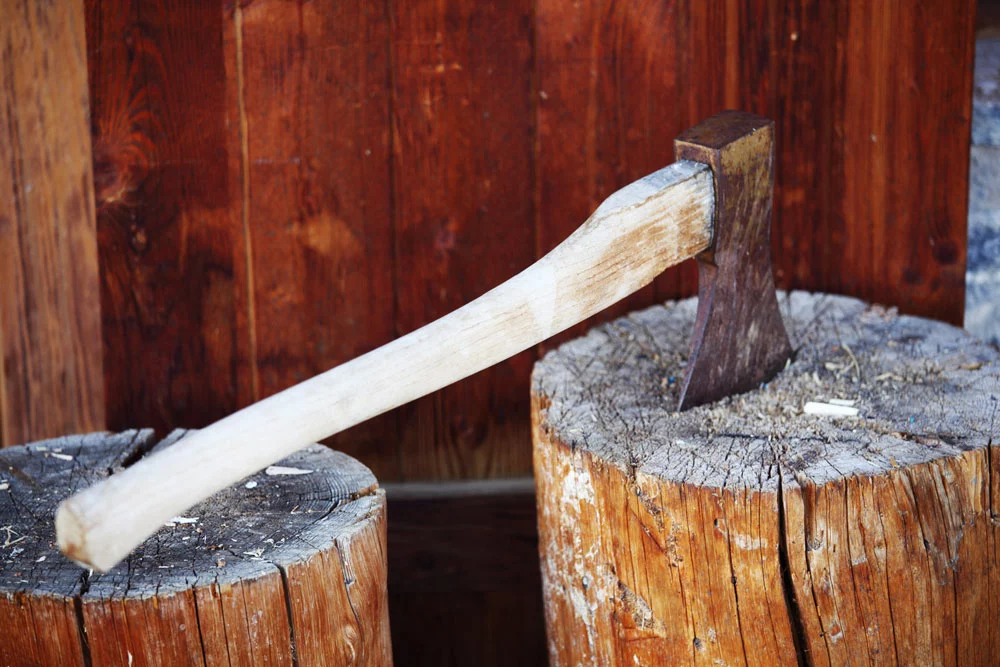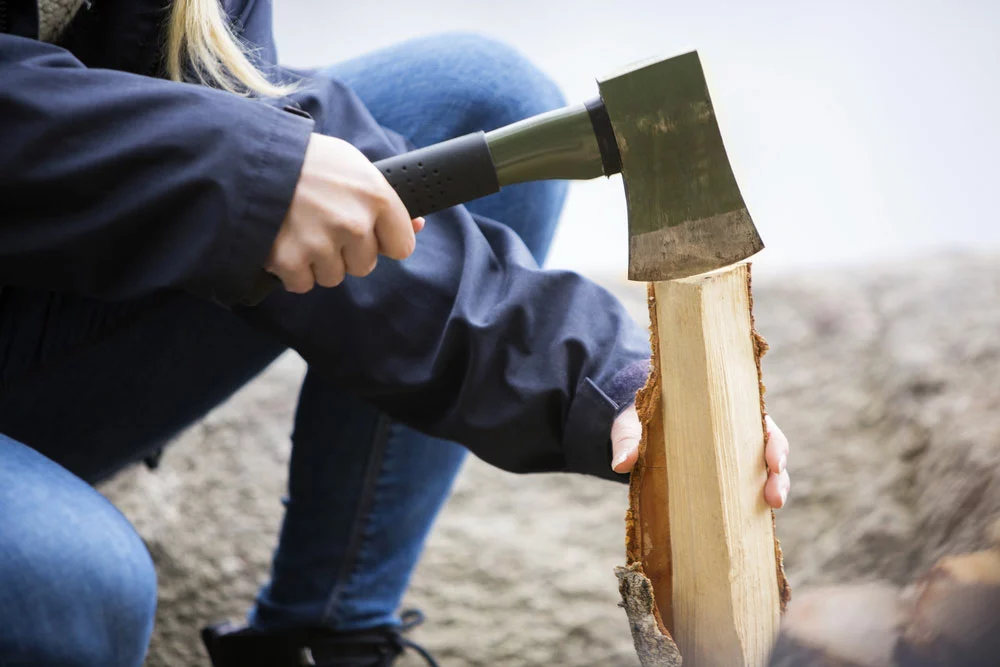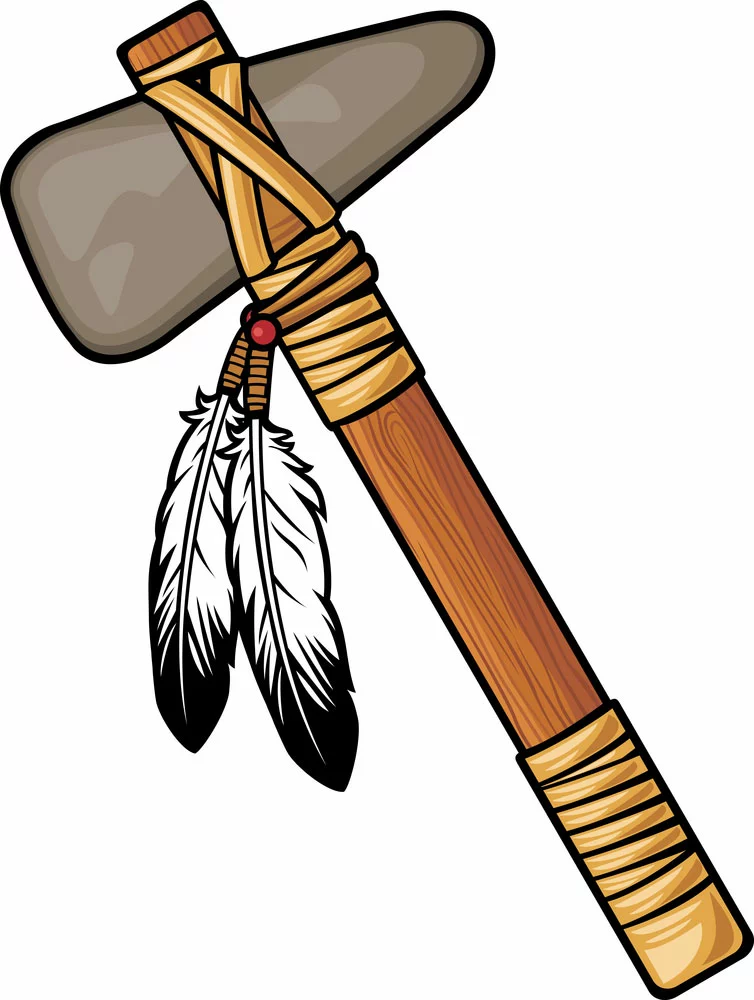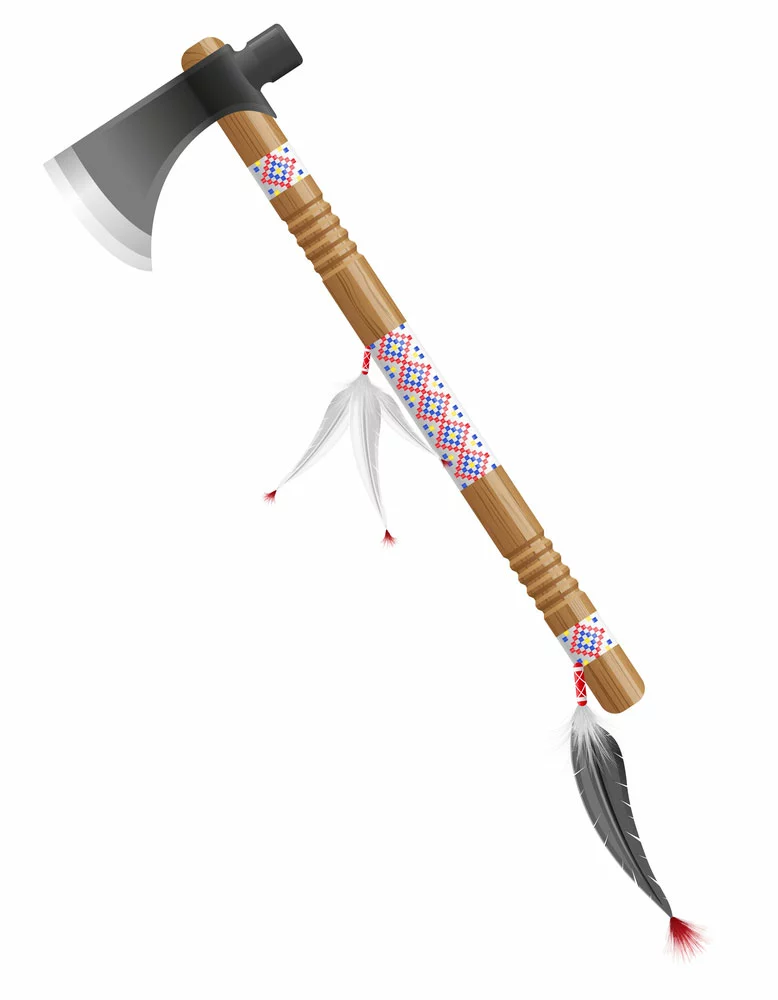When you need to cut a piece of wood or a log, you need a tool to make your work easier. Depending on how much work you need to carry out, you’ll need to choose from a hatchet, tomahawk, or Axe.
Need to learn more about the tools and their differentiating factors?
Please read this article.
Axe vs. Hatchet vs.Tomahawk
An axe is a cutting tool with a metal wedge on one end and a long wood-made shaft. The wedge is sharp and has sharply tapered ages.
Like an axe, a hatchet is a cutting tool with fewer modifications. It’s more compact and smaller than an axe. Moreover, it has heavier blades and smaller shafts with curves and grooves.
On the other hand, a tomahawk is a long single-handed axe with a shorter, narrower blade and a straight wooden shaft. It is thin and designed for axe throwing, hunting, and self-defense.
i). Axe
Head
It is wedge-shaped with a V-like cut. Additionally, it has a heavy tapered head and flat-pole side, which enables it to cut rigid objects without much force.

Image description: metal axe blade in the wood
Bit
A bit (or blade) binds the axe head at one end. However, some designs feature two bits opposite each other. The top of the bit (cutting edge) is the toe, while the bottom corner is the heel.
The Shaft
Ranges from 20 – 36 inches in length. Moreover, it is either of strong wood or fiberglass.
Weight
Weighs over three pounds.
Size
The shaft is 120 cm long and made of birch bark. On the other hand, the blade is 17.4 cm long and made with Antigone.
Shaft Design
The shaft design is made of durable synthetic material. It is simple, straight, and has a circular cross-section. Additionally, the shaft has a curve for a better grip and to facilitate a better swinging action.
Furthermore, the shaft mounts to the head at the shoulder, which has an oval/rectangular cross-section.
Usage
It’s mainly used for chopping wood pieces, felling trees, and splitting logs.

Image description: Axe with a wooden handle.
ii). Hatchet
Head
It has a less drastic, tapered, and streamlined head with a hammer on the opposite side of the bit. Not only is it used for cutting but also for striking.
The head is narrow and has a small tapered body and a large bit. Furthermore, the hammer poll side has a v-shaped cut.
Bit
Made of metal steel and connected to a wooden shaft larger than the head.
Shaft
It is 12-18 inches long, curved, and designed for single-handed use. It is short, has a shorter cutting edge, and with a flat poll side. In addition, it can be of metal, wood, or fiberglass.
Weight
It ranges from 1 – 3 pounds. It’s heavier and closer to a hammer and Axe.
Size
It is small and compact, thus making it maneuverable. The Hatchet is half the size of a tomahawk; likewise, it is easier to handle and uses less energy.
Shaft Design
The shaft of the hatchet curves forward. Furthermore, it extends at a 90-degree angle toward the head of the Hatchet.
Usage
Used mainly for cutting saplings and small trees but not limited to cutting back bushes and other foliage. Camp lovers use it for removing small tree limbs and carving wood. Likewise, they use it for building simple shelters and hammering tent pegs. Additionally, you can use it to chop through built-up snow and ice.

Image description: woman cutting wood using a hatchet.
iii)Tomahawk
Head
It is thin, lightweight, and detachable. Moreover, it has one or two circles cut out in the middle of the head. It reduces the weight and enhances the effectiveness of the tomahawk.

Image description: Native American tomahawk
Bit
It is thinner and longer. It is 4 inches long with a spike or hammer at the opposite end. The head has a severe taper (loose triangle shape) between the spike and the bit.
Shaft
It is short and less than 24 inches. Furthermore, it is straight with a well-balanced natural extension designed to make it as light as possible. Its length gives it more cutting leverage. If the sides were flat, it would throw wood chips less efficiently.
Ax vs. Hatchet vs. Tomahawk: Weight
The head weighs between 260 – 570 grams. In contrast, the shaft’s weight depends on the material used.
Ax vs. Hatchet vs. Tomahawk: Sizes
A modern tomahawk is less than 2 feet long.
Ax vs. Hatchet vs. Tomahawk: Shaft Design
Unlike a hatchet, the shaft design of a tomahawk is straight and extends a 90-degree angle towards the head.

Description: Tomahawk American Indians vector illustration
Usage
You can use it for chopping, throwing, and self-defense in combat.
3. Basic Differences Between an Axe vs. Hatchet vs. Tomahawk

Summary
As we have discussed, a hatchet, a tomahawk, and an axe have different designs since they don’t have the same functions. The head, shaft structure, weight, usage, cutting edge, and handle structure are some factors that differentiate them.
Feel free to contact us if you have any questions.
